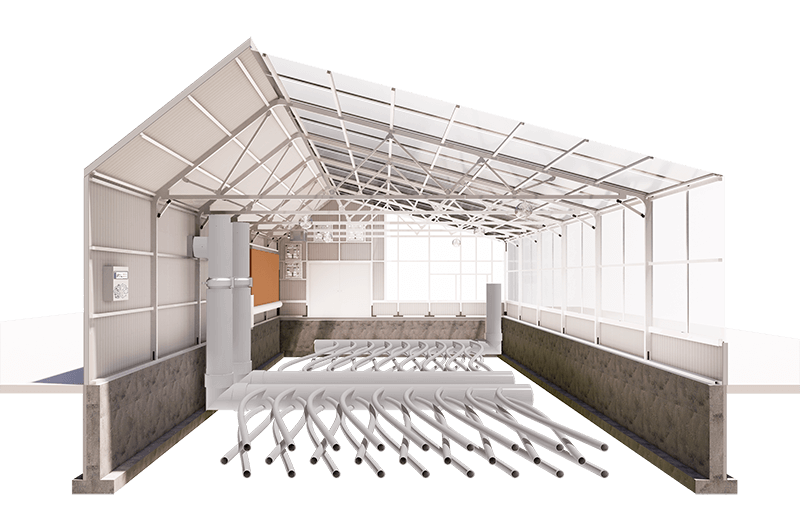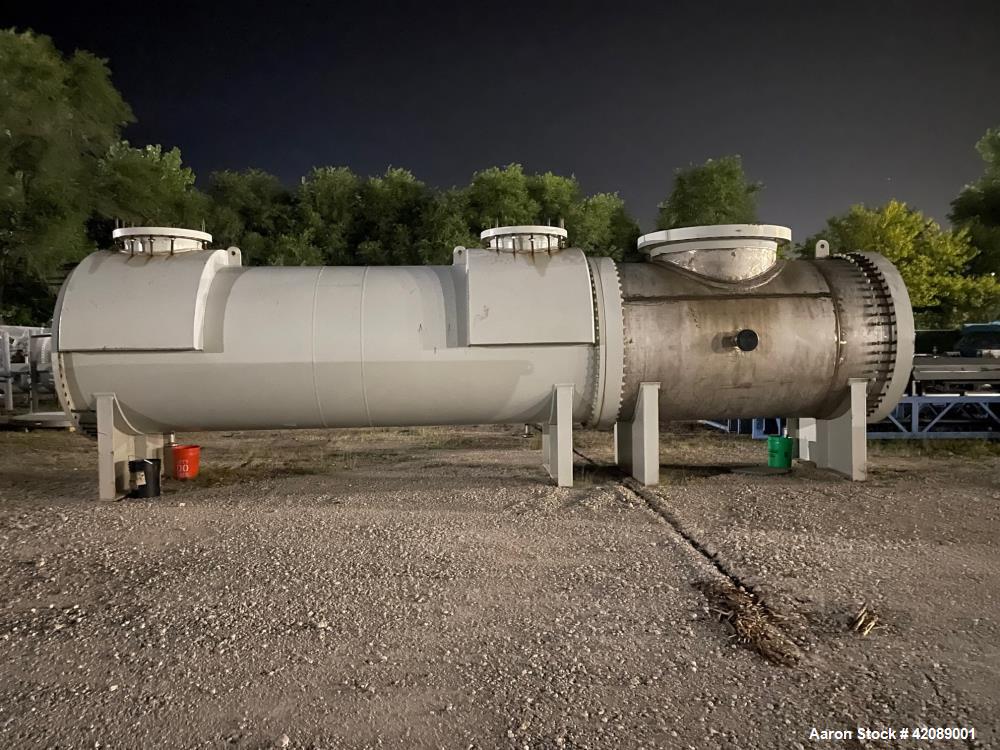Advancements in Heat Transfer Systems: What You Required to Know for Optimal Performance
Innovations in Heat transfer systems are changing performance throughout numerous markets. Advanced materials like graphene and nanofluids guarantee substantial enhancements in thermal conductivity. On the other hand, the integration of IoT and maker understanding provides chances for real-time surveillance and boosted energy performance. Nevertheless, the landscape of thermal monitoring is rapidly developing (DVS Heat Transfer Systems). Comprehending these advancements is important for attaining suitable system efficiency and sustainability in the future. What particular improvements are forming this makeover?
Emerging Materials for Boosted Heat Transfer

Advanced Heat Exchanger Layouts
While typical Heat exchangers have offered their objective in different applications, advanced styles are now arising to meet the enhancing demands for performance and performance. These ingenious styles, such as plate, shell-and-tube, and finned-tube Heat exchangers, integrate enhanced surface area areas and improved flow patterns to enhance thermal transfer prices. Furthermore, compact designs permit minimized room demands without jeopardizing efficiency. Advanced products, such as composites and corrosion-resistant alloys, additionally improve toughness and performance under severe problems. Additionally, simulation technologies and computational fluid characteristics are increasingly used to fine-tune these styles, ensuring peak Heat transfer characteristics. As sectors seek to decrease power consumption and take full advantage of result, the fostering of advanced Heat exchanger designs is crucial in accomplishing these purposes.
The Function of Nanotechnology in Heat Transfer
Nanotechnology plays a vital duty in boosting thermal conductivity within Heat transfer systems. By controling materials at the nanoscale, researchers have accomplished substantial renovations in energy effectiveness. These improvements not only optimize performance yet likewise add to more lasting power remedies.
Enhanced Thermal Conductivity
Substantial advancements in thermal conductivity have actually emerged via the application of nanotechnology, reinventing Heat transfer systems throughout various industries. By integrating nanoparticles right into Heat transfer fluids and materials, scientists have attained amazing increases in thermal conductivity. These nanoparticles, such as carbon nanotubes, graphene, and metal oxides, enhance the Heat transfer buildings because of their high surface area and special thermal attributes. The resulting composites show improved performance in applications ranging from electronics cooling down systems to sustainable energy modern technologies. The capability to tailor the size, form, and structure of nanoparticles allows for optimized thermal management solutions. Therefore, nanotechnology remains to play a pivotal duty in the advancement of much more effective and efficient Heat transfer systems, leading the way for improved industrial applications.
Energy Performance Improvements

Integration of IoT in Heat Transfer Systems
The integration of IoT in Heat transfer systems introduces the implementation of wise sensing units that boost functional performance. These sensing units enable real-time information tracking, enabling immediate adjustments and optimizations. This technical innovation has the potential to significantly boost performance and energy administration in Heat transfer applications.
Smart Sensors Implementation
As Heat transfer systems evolve, the combination of smart sensors with the Net of Things (IoT) has actually arised as a transformative approach. These sensors enable real-time surveillance of stress, circulation, and temperature rates, improving system performance and integrity. By collecting and sending data, they facilitate positive maintenance, decreasing the threat of system failures. In addition, wise sensing units add to energy financial savings by refining operational criteria based on environmental problems. Their capacity to examine fads and anomalies permits for notified decision-making, making sure peak efficiency of Heat transfer Our site systems. As markets progressively adopt this modern technology, the application of clever sensing units stands to change just how Heat transfer systems are managed, leading the way for better sustainability and enhanced efficiency results.
Real-Time Information Monitoring
How can real-time data keeping an eye on boost the performance of Heat transfer systems? By integrating Internet of Points (IoT) technology, Heat transfer systems can take advantage of constant click here for more data collection from wise sensors. This real-time monitoring enables immediate evaluation of temperature level, pressure, and flow prices, making it possible for drivers to determine ineffectiveness without delay. Adjustments can be made to enhance efficiency, minimize energy usage, and prolong tools life expectancy. In addition, predictive upkeep can be applied, minimizing unexpected downtime and costly repairs. The ability to picture performance metrics with control panels boosts decision-making, fostering a proactive strategy to system management. Inevitably, real-time information checking not just boosts operational performance however also adds to sustainability goals within commercial processes.
Energy Performance and Sustainability Trends
Power efficiency and sustainability fads are reshaping the landscape of Heat transfer systems, driving development and conformity across different sectors. Organizations are increasingly focusing on energy-efficient styles to lower operational costs and lessen ecological impacts. The assimilation of renewable power sources is ending up being extra common, making it possible for Heat transfer systems to operate sustainably while meeting governing demands. Additionally, innovations in technologies and materials promote reduced energy usage and boost general performance. Lifecycle evaluations are also obtaining traction, permitting firms to examine the environmental influence of Heat transfer systems from manufacturing to disposal. This focus on sustainability not only sustains corporate duty yet additionally settings organizations competitively in a market where consumers significantly prefer green services. As a result, energy effectiveness and sustainability stay critical considerations for future developments in Heat transfer technology.
Advancements in Thermal Monitoring Solutions
While the need for reliable Heat transfer remains to rise, developments in thermal monitoring remedies are arising to address both performance and sustainability difficulties. Advanced materials, such as stage change materials and nanofluids, are being established to enhance Heat transfer effectiveness - DVS Heat Transfer Systems. These products enhance thermal conductivity and enable better temperature level regulation in various applications. In addition, modern technologies like active thermal control systems are gaining grip, allowing real-time modifications to take care of Heat flow efficiently. These systems add to power financial savings and lower the ecological influence of thermal procedures. The integration of IoT in thermal management facilitates surveillance and predictive upkeep, making certain maximized performance and durability of Heat transfer systems. In general, these developments stand for substantial strides towards more lasting thermal management practices
Future Instructions in Heat Transfer Innovation
Emerging developments in thermal management remedies signal an encouraging future for Heat transfer innovation. Scientists are increasingly concentrating on developing materials with exceptional thermal conductivity and boosted energy effectiveness. Developments such as nanofluids, which contain suspended nanoparticles, supply considerable renovations in Heat transfer performance. In addition, the assimilation of smart materials that adapt to differing temperature problems use this link is getting grip, permitting more receptive and effective systems. The increase of additive manufacturing techniques is additionally enabling the design of complicated Heat exchanger geometries that enhance liquid circulation. The execution of device discovering algorithms is anticipated to transform the optimization of Heat transfer systems, helping with predictive maintenance and performance improvement. Jointly, these innovations are positioned to change the landscape of Heat transfer innovations in different markets.

Often Asked Concerns

Just how Do I Select the Right Heat Transfer System for My Application?
Selecting the best Heat transfer system involves examining application demands, including temperature varieties, liquid homes, and efficiency requirements. Examining system types, maintenance considerations, and cost-effectiveness also plays a vital role in making an educated decision.
What Are the Upkeep Demands for Advanced Heat Exchangers?
Upkeep demands for advanced Heat exchangers normally consist of normal assessments, keeping track of for leaks, cleaning of surface areas, and assuring ideal circulation prices. Complying with maker standards guarantees efficient procedure and extends the tools's lifespan.
Just How Do Ecological Aspects Affect Heat Transfer Performance?
Environmental elements substantially affect Heat transfer efficiency. Variants in air movement, moisture, and temperature level impact thermal conductivity and convective Heat transfer, eventually impacting system efficiency and requiring factor to consider during the style and operation of Heat transfer systems.
What Security Standards Apply to Heat Transfer Solutions?
Security criteria for Heat transfer systems generally consist of guidelines from organizations such as ASME and ASTM. DVS Heat Transfer Systems. These requirements address materials, layout, and operational techniques to guarantee dependability, efficiency, and defense against dangers in different applications
Exactly How Can I Fix Typical Heat Transfer System Issues?
Fixing usual Heat transfer system concerns involves looking for leakages, making sure proper fluid flow, checking insulation integrity, and confirming temperature level differentials. Determining these variables can assist preserve system efficiency and avoid additional difficulties.
Nanotechnology plays an essential role in improving thermal conductivity within Heat transfer systems. Substantial innovations in thermal conductivity have actually emerged via the application of nanotechnology, transforming Heat transfer systems across various sectors. Improvements in thermal conductivity with nanotechnology have led the means for amazing improvements in power performance within Heat transfer systems. Energy effectiveness and sustainability patterns are improving the landscape of Heat transfer systems, driving innovation and conformity across various sectors. The assimilation of IoT in thermal monitoring assists in monitoring and anticipating upkeep, ensuring maximized performance and long life of Heat transfer systems.